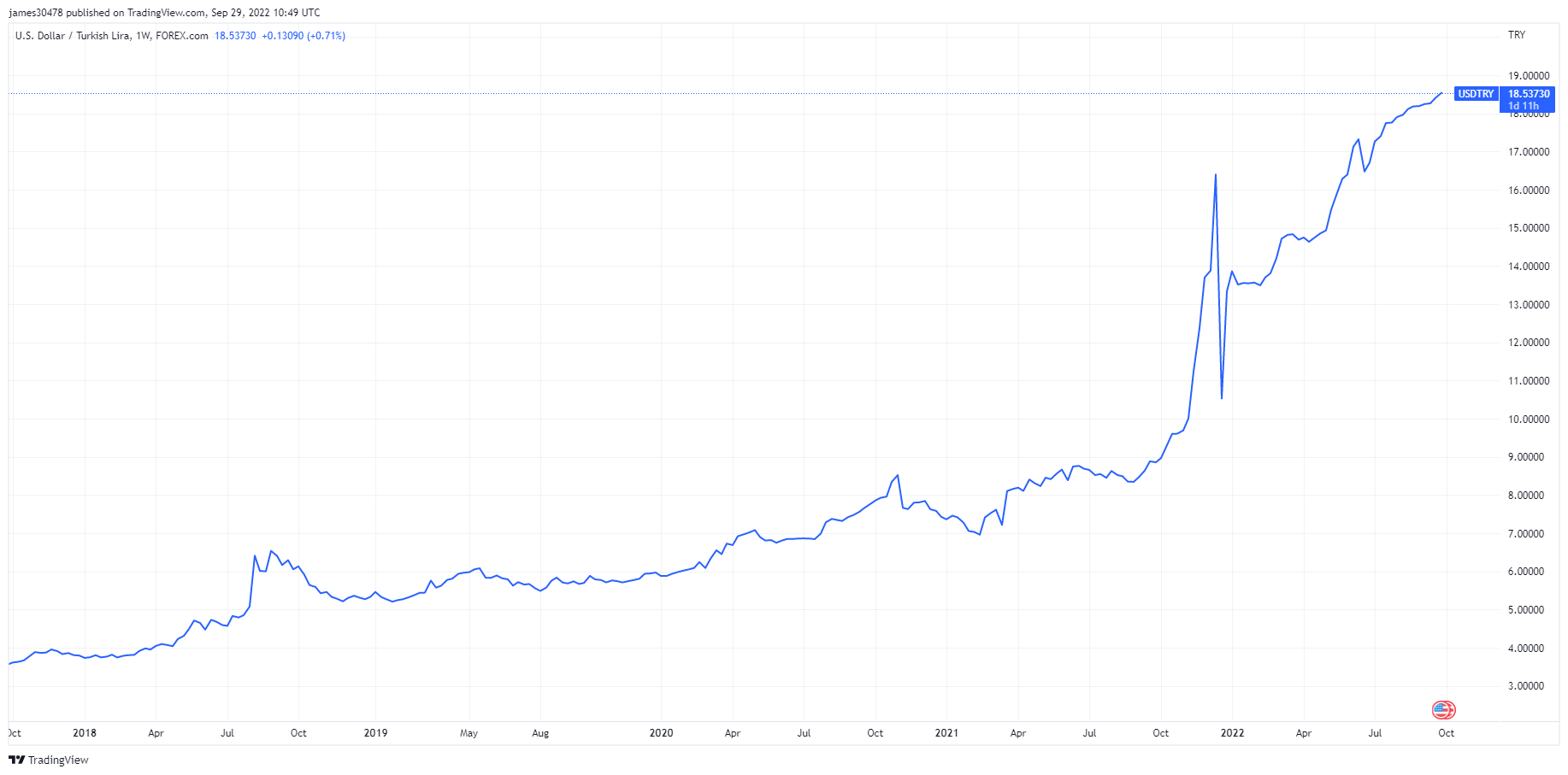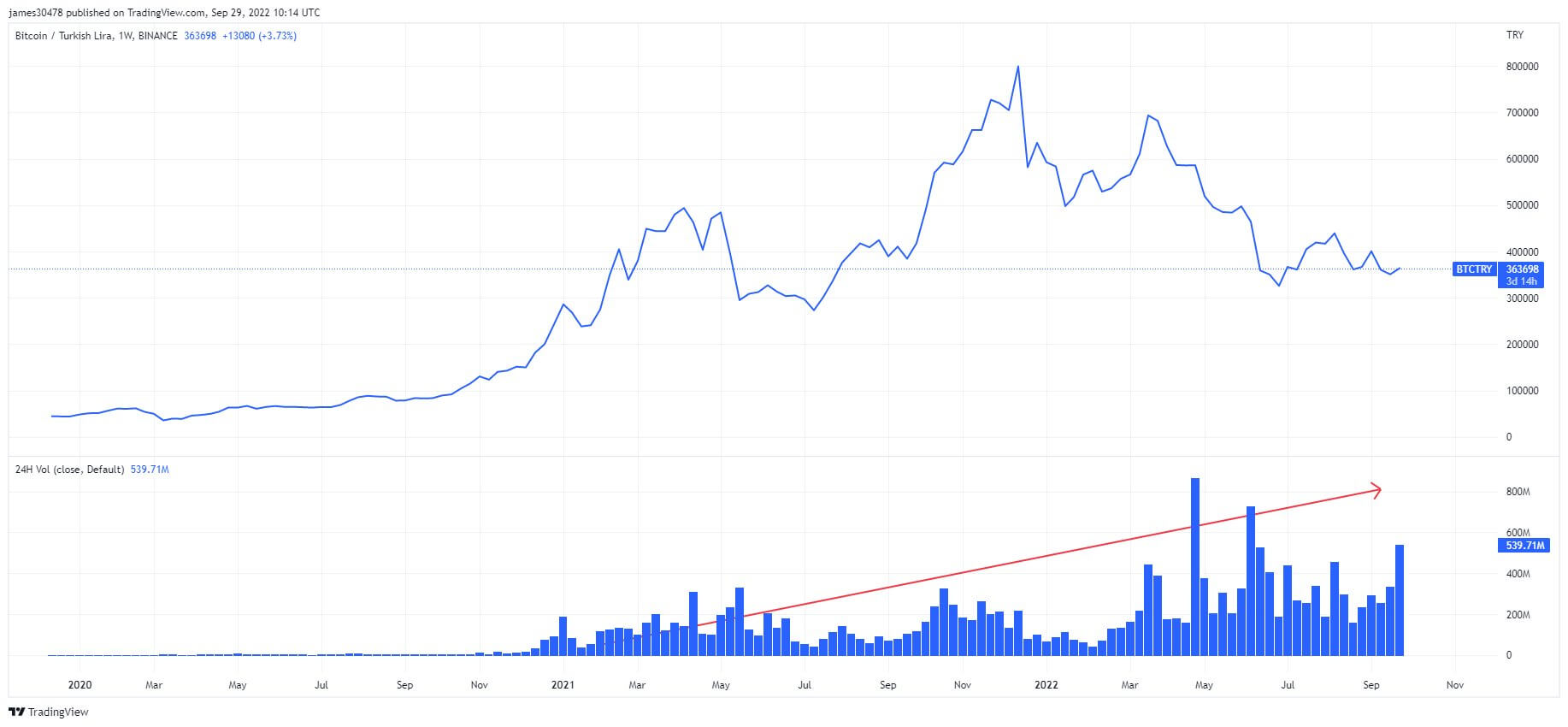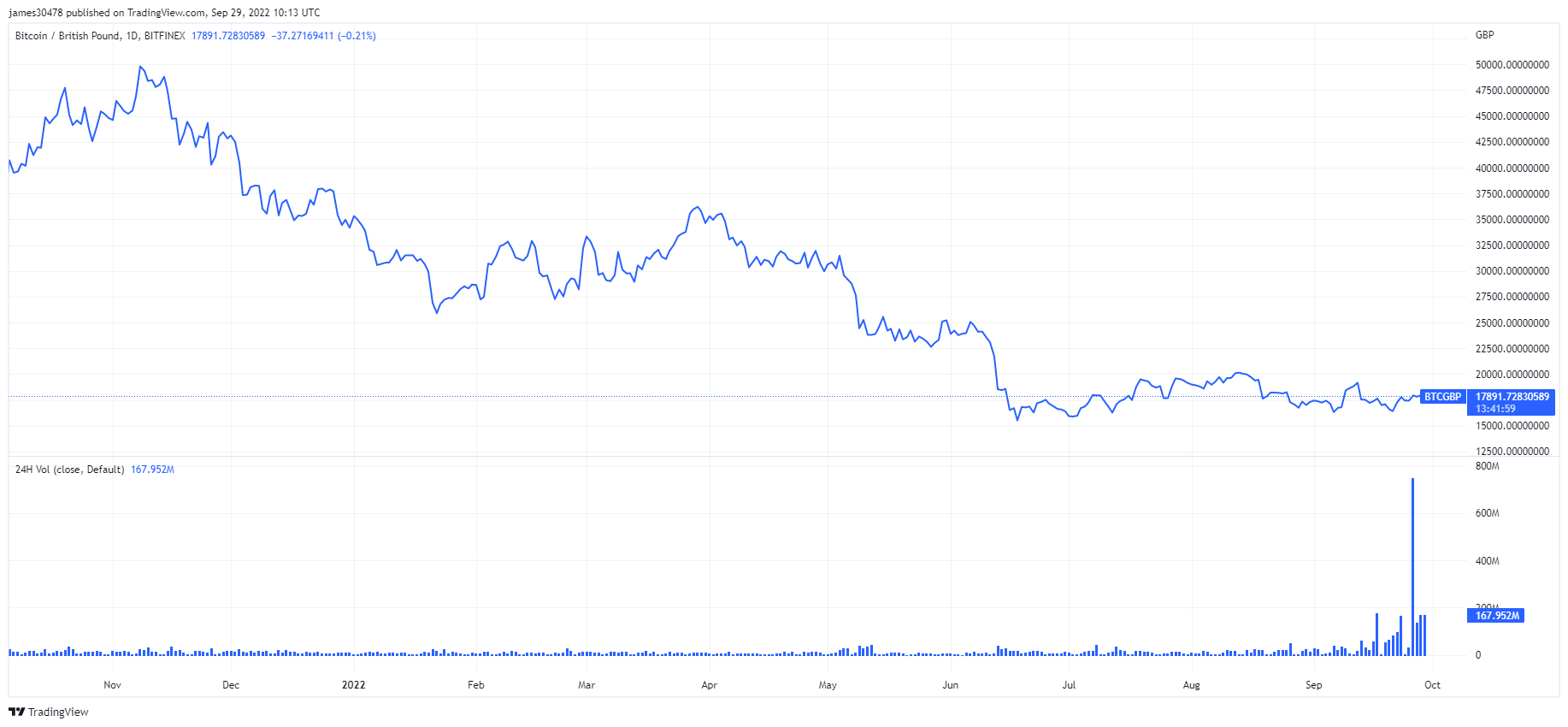Bitcoin’s reputation as a safe haven asset has long been disputed by the world of traditional finance. Its lack of centralized control, extreme price volatility, and novelty made it hard to categorize as inflation-proof or recession-proof.
However, in the past year we’ve seen that in times of uncertainty, investors keep choosing Bitcoin over fiat.
Inflation leads to Bitcoin
Take, for example, the Turkish lira (TRY). The currency has been on a steady decline since 2018, with the cumulative inflation over the past three years surpassing 100%. Since the beginning of the year, the lira lost 26% of its value against the U.S. dollar (USD). PwC categorized Turkey as a hyperinflationary economy in its September report, saying that deteriorating conditions began in 2021 and have worsened in mid-summer 2022.
The 2017 exchange rate of 1 USD per 3.5 TRY now stands at 1 USD er 18 TRY. This has created huge amounts of USD/TRY trading volume, which has been on a parabolic rise since the beginning of the year.

The U.S. dollar isn’t the only currency Turkish people have flocked to.
There has been a steady increase in BTC/TRY trading volume on centralized exchanges. Data from Binance has shown that the price of Bitcoin in TRY jumped to its ATH at the beginning of 2022, while the 24-hour trading volume for the pair reached its peak in May this year.

On Sept. 26, 2022, the British pound experienced a flash crash as large as the one recorded on Black Wednesday 1992, losing 4.3% of its value against the U.S. dollar in a single day. As previously covered by CryptoSlate, the drop was a result of the Bank of England’s emergency intervention in the bond market.
The same day the pound experienced its worst drop in 30 years, the BTC/GBP trading volume reached its ATH, soaring over 1,200% in 24 hours.

The situation was no better in Japan, where the central bank spent almost $20 billion, or 3.6 trillion yen, intervening in the foreign exchange market to prop up the rapidly declining yen. While the figure indicates the government’s total spending on currency intervention in the entire month of September, it’s widely believed that all of the $20 billion have been used in a single intervention…
Click Here to Read the Full Original Article at Bitcoin (BTC) News | CryptoSlate…
























